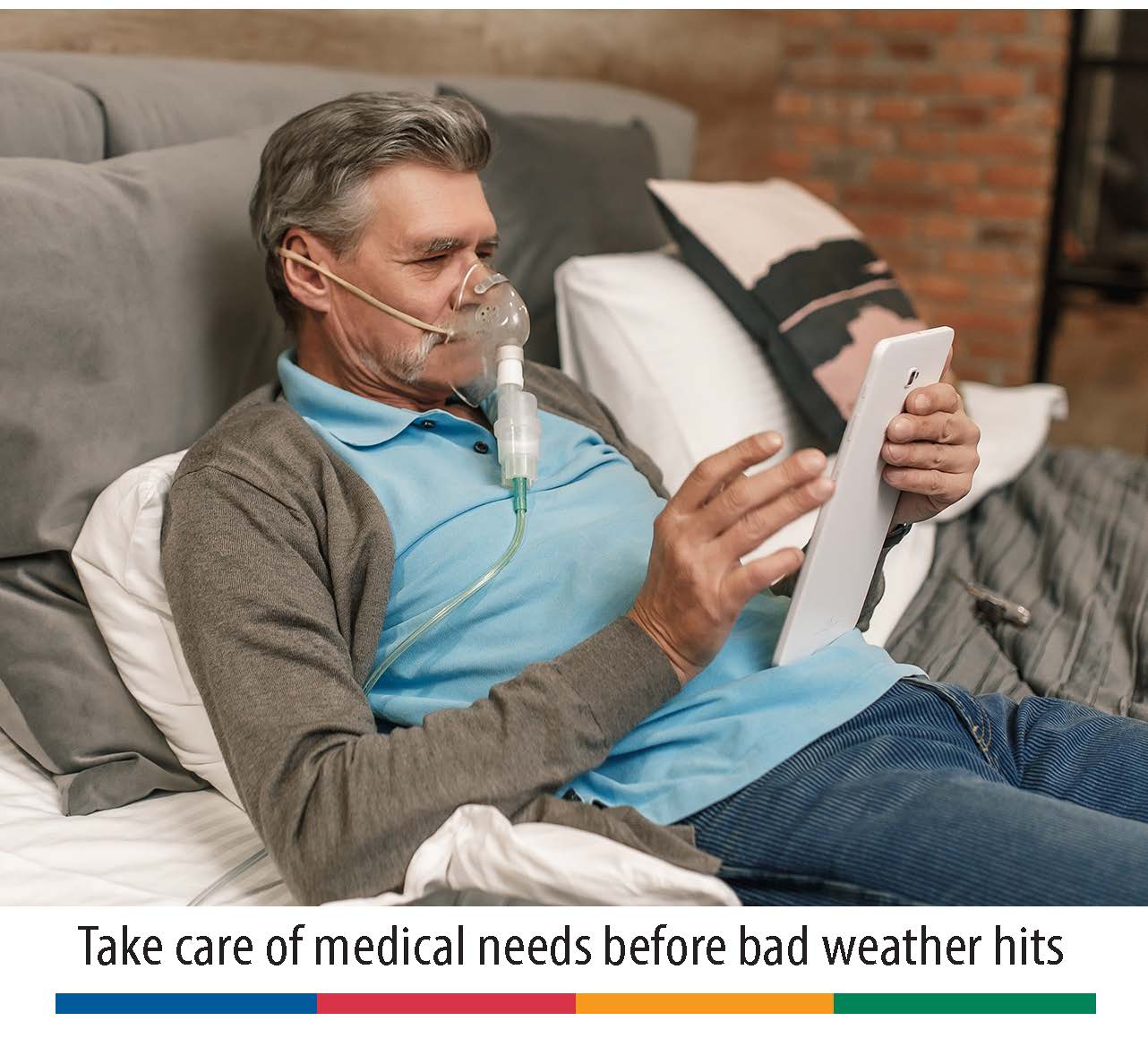Oxygen dependency requires planning for emergencies. Don’t let an unexpected event like an extended power outage become a life-threatening situation. Instead, here are six things you should do to prepare for possible outages:
1. Complete an emergency power planning checklist. The U.S. Food and Drug Administration offers a checklist (go to www.fda.gov/media/80782/download) that will help you establish a plan, note emergency phone numbers and organize medical device information.
2. Charge batteries. If your oxygen concentrator runs on battery power, always have a supply of fresh and fully charged batteries that can get you through at least a few days. If you don’t normally use them or don’t know how long they last, contact your medical supplier.
3. Secure an alternative power source. Consider getting an emergency generator or uninterruptible power supply, especially if you live in a remote location. Know how to safely use the generator you choose.
4. Keep extra supplies. If extreme weather is forecasted, have your medical supply provider set up one or more large compressed oxygen cylinders (and know how to use it) in case you need to switch to an oxygen delivery method that doesn’t require electricity.

5. Investigate conservation options. Ask your doctor if you can safely set equipment to reduce flow to conserve the oxygen supply and extend the battery life of the system.
6. Be ready to move. Identify people who can get to you quickly to move you and your equipment to a place where you can use your oxygen, be it their home or a local facility. It’s just a few steps, but they may just save your life or the life of someone you know!
